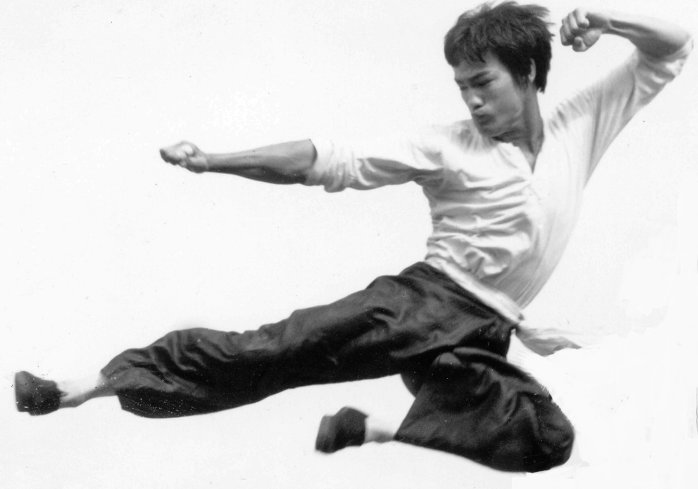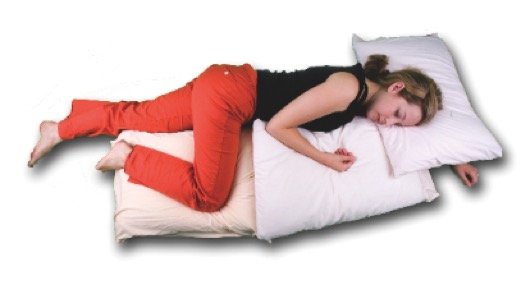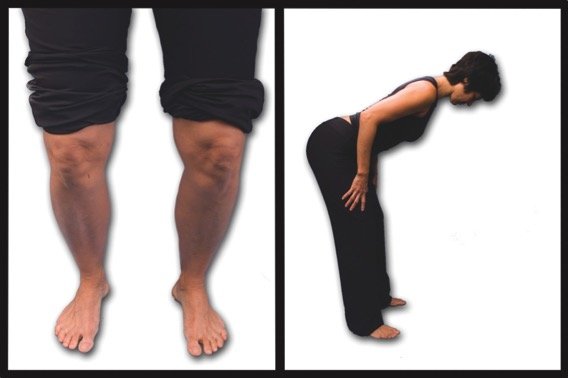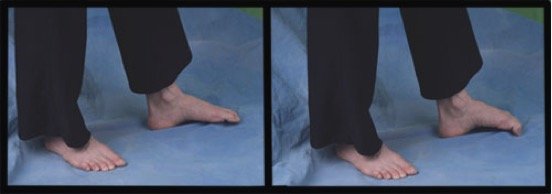How to Fix Muscle Imbalances - Do They Matter?
Having some asymmetry in our bodies is natural and by no means a problem… for example, the majority of us are either strongly right- or left-handed, and if we play soccer we soon discover that we have a preferred foot, too! This study shows that pelvic obliquity (often caused by legs of a slightly different length) is present in equal measure in people both with and without Lower Back Pain, and doesn’t seem to be a contributing factor to the problem of back pain.
A famous example of someone who had a big leg length discrepancy was Bruce Lee. It didn't hold him back very much! To quote him, "I became a martial artist in spite of my limitations. My left leg is almost one inch shorter than the right. That fact dictated the best stance for me – my right foot leading. Then I found because the right leg was longer, I had an advantage with certain types of kicks, since the uneven stomp gave me greater impetus.”

Bruce Lee, who had almost a 1" leg length discrepancy, managed to go far nonetheless.
It is a good bet that having a dominant side is not a significant problem for humans, or we would likely have evolved to be more ambidextrous!

Pete Sampras showing great form. Playing tennis is a very asymmetric activity, but amateurs and professionals alike don't suffer from it in any obvious way.
As long as our bones and joints stay well aligned and our postural muscles are strong, moderate amounts of muscular asymmetry doesn’t seem to be problematic. However, if our posture and movement patterns have been poor, we are much more likely to develop shears or twists in our bodies, and suffer injury or uneven wear in the joints. Joints or muscles that remain unused because of pain or weakness can degenerate or atrophy, hindering the development of a strong postural base.
Because of this, it is worth observing our everyday movements. If you favor one side to the extent that one side of you becomes strong and the other noticeably weaker, or one side is flexible and the other stiff or uncomfortable, applying the Gokhale Method can help redress the balance:
Stretchlying on a Different Side
If it is suitable for your back, give a little more attention to stretchlying on your less favored side, where it is likely that your back muscles are tighter and shorter.

Stretchlying on your less favored side can help even your body out.
Fine-tune Your Hiphinge
Make sure that:
Your weight is evenly distributed between your feet
Each knee is bent the same amount
Each thigh is externally rotated to the same degree
Most importantly, check that your pelvis and torso remain central and that you are not listing to one side.

Be sure that as you bend, your knees point in the same direction as the feet, and that you don't list to one side.
Glidewalking
When practicing your glute squeezes for glidewalking, usually by raising a leg behind you, it can be helpful to complete more reps on your weaker side. Same with the inchworm exercises for gaining foot strength.

Try to even out unevenness in the strength of your feet by doing more reps on the weak side.
Steps and Stairs
Make sure you do not always climb up steps and stairs with the same leg first. Alternate which leg you start with, and focus on pushing off from behind with the foot.

Alternating which leg you begin climbing stairs with helps eliminate a possible cause of muscle imbalance.
You may also notice that a movement flows well in one direction, and feels awkward in the other direction (for example, opening a door with your non-dominant hand). Practice switching sides from time to time. Beginning with a blank slate will help you reexamine and improve your movement pattern. Being somewhat ambidexterous can improve your overall muscular strength and be helpful in sports and everyday life; it can also help chart new and helpufl neural pathways in your brain.
Do you have activities in your life that are very asymmetric? Have they caused you problems or have you navigated them just fine?
Join us in an upcoming Free Workshop (online or in person).
Find a Foundations Course in your area to get the full training on the Gokhale Method!
We also offer in person or online Initial Consultations with any of our qualified Gokhale Method teachers.

Comments
Heel lifts have pluses and
Heel lifts have pluses and minuses.
Your body has adapted to whatever discrepancies there are, so change can be a small (or big) trauma all of its own. If there wasn't pain or a clear problem, I wouldn't advocate a big lift or perhaps any lift. I would begin by improving all the bilateral issues, which are usually numerous and which often solve whatever problem(s) there currently is.
In addition to improving posture in general, it might make sense to begin using a small lift to make up for an obvious discrepancy that is causing problems or is likely to cause problems. Beginning with a small lift gives the body a chance to adapt to the many changes that will take place.
One relevant factor is how long the discrepancy has been in place. If it is due to a recent trauma or surgery, then it makes more sense to imediately make up for it with a heel lift. If it's a longstanding discrepancy, a slower shift makes more sense to me.
I believe you need to use both your logic and your sense of your body (you're the closest one in after all!) to decide how to proceed. You're also the best one to know how attentive you are going to be to signals from your body and how diligently you are going to work on improving your posture. Improving your general posture is the only no-brainer in this scenario.
Hope you figure out a good trajectory here!
I used to swim and read that
I used to swim and read that doing the crawl, the swimmer should learn to breathe on both sides. I had always only breathed on my right. Learning to breathe left was a challenge in the beginning, but I was able to develop it and swapping between left and right improved my endurance. I now try to develop active skills on both sides to guard against unhealthy imbalances in my body.
Very cool. I'm inspired and
Very cool. I'm inspired and am going to try this also. It's an activity I haven't really reflected on, as crawl is a difficult stroke for me and I've only recently gotten comfortable doing it at all!
Add New Comment
Login to add commment
Login